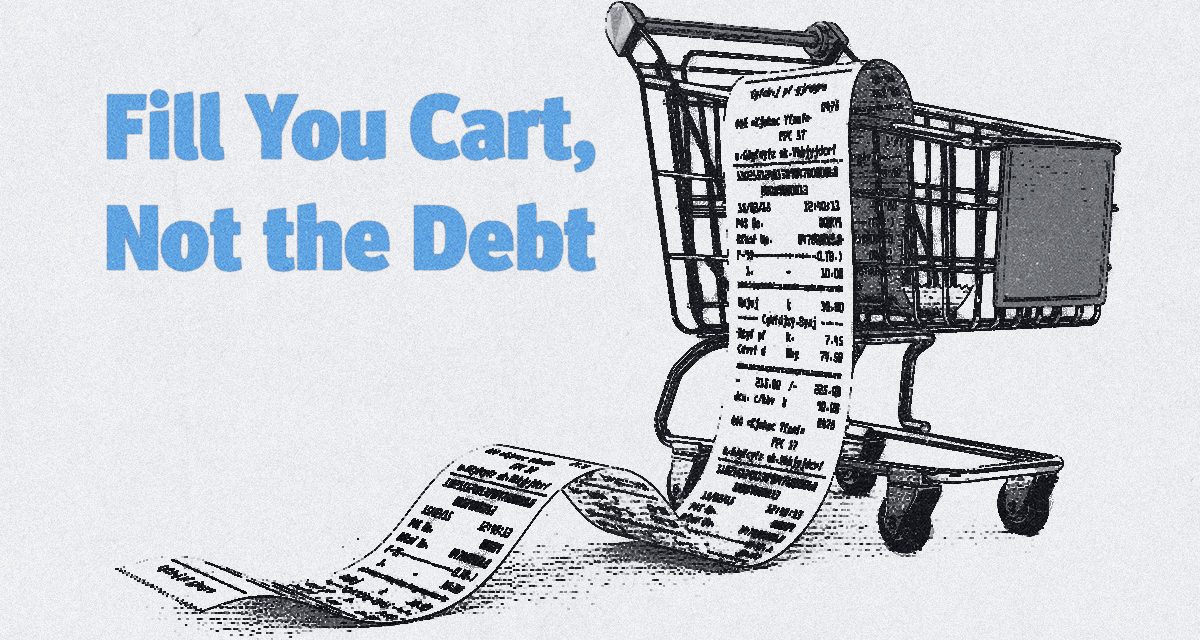We know we can’t be the only ones picking our jaws up off the floor after looking at our grocery bills lately. We all have to eat, yet it’s harder than ever to keep our fridges—and our bank accounts—full. What’s a grocery shopper to do?
Like many of us, saving on groceries is top of mind these days and we thought we would share these tried and true tips for saving at the grocery store.
Meal Plans
This can be the hardest for some of us to do but planning your meals can help you save money and time by avoiding impulse purchases and multiple trips to the grocery store.
Bonus Points: Make one big trip vs many smaller trips. The more you visit the grocery store the more likely you will purchase more impulse items.
Make a List
You’ve probably heard this before but, like many sayings, it’s true. Knowing exactly what you need to get will help you avoid those tempting impulse purchases or, buying that item that you just can’t recall if you already have on hand.
Bonus Points: Organize your list so that when you are walking thru the store you will find each item on the shelves in order. Avoiding having to double back and reducing the temptation to add things to your cart that you don’t really need.
Join the Loyalty Program
More than likely your local grocery store has some sort of loyalty program that offers savings to customers. Most are free to join and can save you a lot over time.
Bonus Points: Download app, if they have one. Your savings can be increased by logging into your account and selecting specific products with additional savings offered.
Grab the Small Cart
Ever find yourself with the biggest cart available and only a few items on your list, yet you still end up with a full cart when you hit the check out line? Well limits can be our friend and choosing the small cart can help you avoid impulse buys.
Bonus Points: Ditch the cart and pick up a basket! But if you must use a cart, pick up a basket too. Put any items not on your list in the basket. When you are checking out it will be easier to leave behind any items that will put you over budget.
Don’t Listen to the Muzak
Many stores use muzak or pre-recorded playlists that encourage customers to spend more and move through the store faster. Listen to your own music and put yourself back in the driver’s seat.
Bonus Points: Listen to personal finance podcast that will help you improve your financial wellness.
When to Buy Organic
You don’t have to always buy organic. Many fruits and vegetables are good even without the Organic labels. If your main concern is pesticides and other chemicals, check out EWG’s Dirty Dozen. If it’s GMO (Genetically Modified), you can see the most common GMO crops on this FDA site.
Bonus Points: Get your fruits and vegies in season and at a farmers market if you can. Knowing the growers and their produce can help you feel better about the food you eat while saving you some money.
Store Brands
Choose the store brands when possible. They are often the same product from the same manufacturer or supplier and in many cases you can save more than a few pennies. Locally; Costco has Kirkland, Trader Joe’s has Trader Joe’s, Fred Meyers has Smart Way, simple Truth, Private Selection and Kroger, and Walmart has Great Value and Better Goods.
Bonus Points: Make your own. While it’s not always possible to make everything from scratch, there are some products like sauces or Jam that can be made cheaply at home by buying bulk supplies and doing the work yourself. Check out OSU’s Home food preservation site and this list of things that can be made at home on Taste of Home’s website.
Skip the Prepared Foods
While those meal kits are really enticing when you are on a time crunch, they are often two or three times more expensive. They may be time saving and sometimes they even taste great, but they will be less appetizing when you realize you can make them yourself for less than half the price.
Bonus Points: If you really are pressed for time and must cut some corners, try Costco’s famous roast chicken. As a lost leader (items priced below what they cost the store) these roasted chickens are great and can be used as an ingredient in many very tasty dishes. Check out this article in Eating Well.
One Time Use, Special Ingredients
Try to avoid those meals that require a specialized ingredient that you may not use again in time to use up the whole package. There are a lot of delicious creations that require unique ingredients that may not be a part of your weekly meal plan. If that’s the case you can either avoid the meal or ask yourself if you can just leave it out and still get a solid result.
Bonus Points: Get ingredients from the salad bar or bulk section. Sometimes you only need a handful of spinach or a 1/4 cup of coconut. See if you can source those rarely used ingredients at the salad bar, or in the bulk section, before paying for a whole container.
Don’t Shop Hungry!
Yes, it begs to be said again because this last tip will absolutely help keep you from buying an extra bag of potato chips, pint of fresh berries or that frozen pizza that isn’t on your list.
Bonus Tip
Track your spending. You just might find a few surprising ways you have been spending your money. With Mid Oregon’s Financial Checkup widget in digital banking you can track your spending easily. It’s even possible to get very detailed by going into your purchases and editing their categories. For example, if you went to Fred Meyers and bought a TV but the app categorized it as Groceries, you can change the category to Household Expense or Entertainment—you have control over the categories and you can even add more if you need them. Giving you an accurate picture of your spending over time. Check out this video to see how it works: Financial Checkup Video
Mid Oregon has the tools available free for all our members. If you haven’t signed up for digital banking or Credit Savvy, check them out today.





